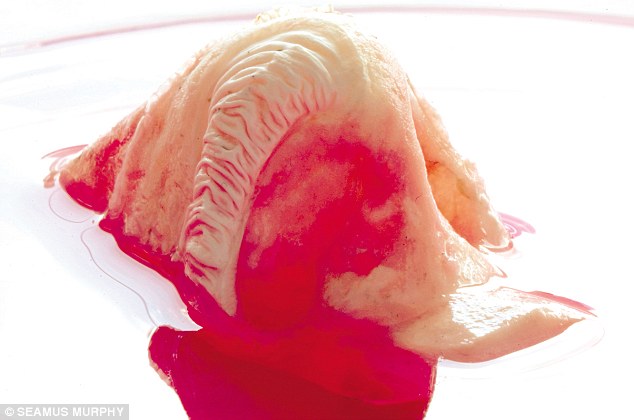“Science” and “Fashion” are not often found in the same sentence, but welcome to the 21st century. As the design arts and sciences become the central constellation in a new organization of knowledge, the older distinctions between science, art, technology, fashion, engineering, entertainment, and other domains of modern culture will become increasingly outmoded. To get a sense of how things are changing, take a sniff of this.
You are looking at a synthetic nose in a petri dish. By coating a polymeric cast with human cells, the University College London’s Department of Nanotechnology and Regenerative Medicine can produce organs that can be transplanted without risk of immune reactions leading to bodily rejection and other complications. Noses, ears, and even a windpipe are now possible, with much more to come. (For a frothy, not very informative report on the lab, go to this story by the Daily Mail.) Gives new meaning to getting a nose job, doesn’t it?
Jokes aside, one does wonder where it could end, and what strange sights might become commonplace along the way. The artist Stelarc has already been cutting a trail in that direction, not least with through the surgical construction of a prosthetic ear on his arm. (I’ve had dinner with the guy and seen the thing myself.) But we expect that from artists, right? Well, not exactly, but after the fact we come to believe that was the provocation we might expect. And despite the lengths to which artists will go to break through to the other side, their efforts can remain merely provocative precisely because they are still framed by the cultural category of art.
Which is one reason to look again at fashion. Although an even more limiting categorization, it also is a form of visionary design that can slip under the radar precisely because it is assumed to be so superficial and ephemeral. Which it is, but not before it can be downright disturbing precisely because it might be modeling the future.
These creatures are from the Erdem collection during London’s Fashion Week. Don’t they look like they could come from a vat in the lab? The gush at The Daily, the industry publication for the show, got it exactly right: “Clone-like, robotic girls made up a beautiful model army at Erdem. The pièce de résistance? A dusting of neon orange to the inner lip. ‘It’s as if they are grasping a neon bulb in their mouth and it’s glowing,’ explained the show’s make-up man Andrew Gallimore.” And some day we’ll be able to design for that more extensively. Plug and play, you might say.
Which brings up the matter of gender, doesn’t it. Just where will designing women end? Equally chilling is the idea that the lab would select for such extreme whiteness. Now that we have an image of the cloned body, and not just the part, we can realize once again that the real problem may not be the technological capability, but how it could be used to reproduce a retrograde politics.
That’s the kind of reflection that art is supposed to provide. As one design art is used to reflect on another, perhaps the post-human can become a future that is not only possible, but worthwhile.
Photographs by Seamus Murphy and Morgan O’Donovan and Shaniqwa Jarvis. FYI, I’ve mentioned the post-human before here, here, here, and here; as you can see, I haven’t even settled on the spelling yet. I’ll hope that my understanding of the subject is, well, evolving.


Discussion